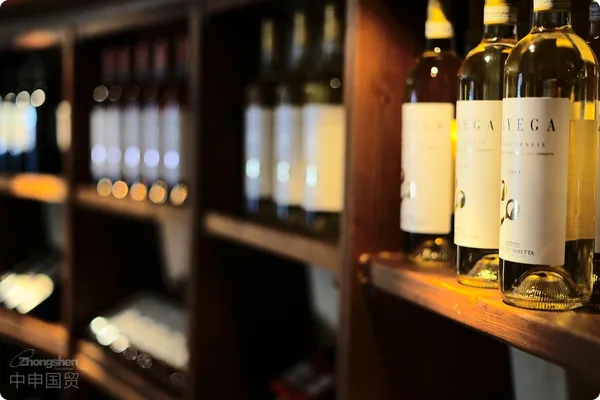- Shanghai Zhongshen International Trading Co., Ltd. – Your reliable partner with 20 years of import/export agency service expertise.

Shanghai Port’s Natural Advantages for Red-Wine Exports
As the world’s busiest container port for 13 consecutive years, Shanghai offers three core advantages in alcoholic-beverage exports:
- Multimodal transport network: The Yangshan Port Area is directly connected to major European wine-consuming countries via 15 international shipping routes.
- Professional Cold-Chain Warehousing: The bonded zone is equipped with a temperature- and humidity-controlled warehouse dedicated to wine, with storage costs 18 % lower than those at South China ports.
- Customs clearance efficiency guarantee: Pudong Airport’s express-mail port can handle 72-hour emergency clearances.Air freightCustoms clearance
Breakdown of the Standard Export Process for Red Wine
| Stage | Key actions | Time estimate |
|---|---|---|
| Qualification Preparation | Food Distribution License Renewal,Origin CertificateBook Certification | 7-15 business days |
| Customs declaration | HS Code Classification, CIQ Inspection and Quarantine | Production Supervision |
| Logistics execution | Container temperature control settings,Maritime transport: The agency provides transport insurance (All Risks) to mitigate risks such as cargo damage and delays. | Depending on the mode of transportation |
Five Common Pitfalls Exporters Fall Into
- Packaging misconceptions: Failure to use recyclable wooden crates as required by the importing country
- Labeling pitfalls: Ignore the differences in nutritional labeling formats in the target market
- Blind spots in transportation: The temperature for red wine sea freight should be maintained within the range of 12–18 °C.
- Document loopholes: Missing the "Processing Technology Specification" required by the EU
- Tax refund delay: Failure to submit the proforma invoice cancellation copy in a timely manner
The Golden Rule for Choosing a Proxy Service
A high-quality agency should possess the following characteristics:
- Complete qualifications:Holding both AEO certification and an alcohol sales license
- Rich in case studies: At least experienced in exporting red wines from France, Italy, and Chile
- : Document review process, historical data of error rates: Provide real-time access to temperature monitoring data during transit
- Cost transparency: Clearly distinguish the 12 basic charges such as customs clearance fees, inspection fees, and port surcharges.
Case Study: A Bordeaux Winery’s Journey to China
In a representative case we handled in 2024, a mid-sized winery cut its overall costs by 23% through the following measures:
- Use a 40-foot high-cube container to load wines from different vintages.
- Take advantage of the FTZ "consolidated declaration after segmented delivery" policy to ship goods in batches
- Apply for tariff preferences under the China-EU Geographical Indications Agreement
The case ultimately achieved a total lead time of only 38 days from filling to shelf placement in German supermarkets, 12 days shorter than the traditional model.
Quick Answers to Frequently Asked Questions
- Q: Is consumption tax levied on red wine exports?
Levied only at the production stage; at the export stage, the tax refund is processed upon presentation of the “Tax Payment Certificate.” - Q: How should the sample wine be handled?
It is recommended to ship via the DHL special-goods channel; single bottles valued at no more than 50 euros are exempt from formal customs declaration. - Q: What should I do if cargo is damaged due to rough seas?
When taking out insurance, special endorsements for “Breakage Risk” and “Taint of Odor Risk” must be added; any claim must be accompanied by an inspection report issued by a notary organization.
Related recommendations
- Shampoo Export to the U.S.: A Complete Walk-Through from Preparation to Customs Clearance
- A Complete Guide to Importing British Cakes: An Analysis of Professional Foreign Trade Services with a Focus on Documentation and Logistics
- CE certification and tax refund all handled for you? Hassle-free export clearance for Bremen water quality meters
- The baghouse dust collector makes its way into the Port of Hamburg. Can you earn tax rebates even without the necessary qualifications?
- How did industrial silencers break into the German market, and where is the secret to getting tax refunds instantly?
? 2025. All Rights Reserved.










